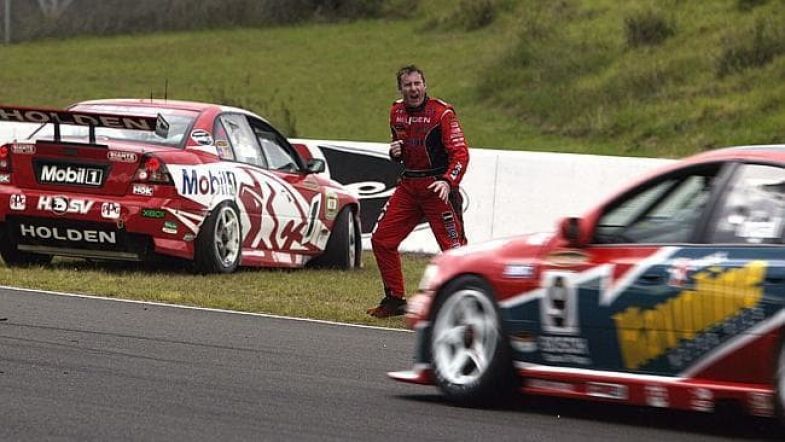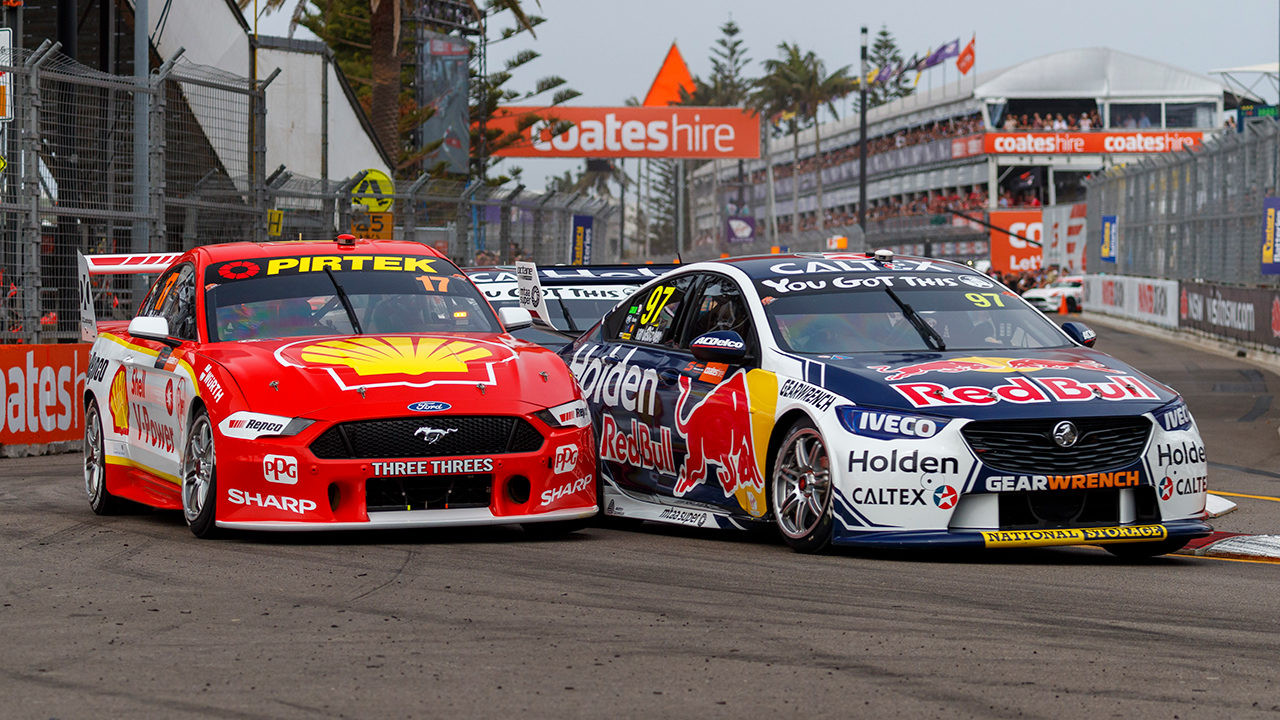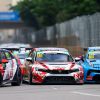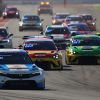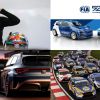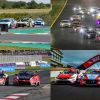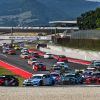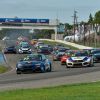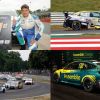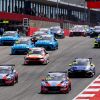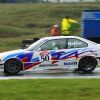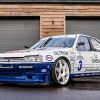Top ten moments that defined Supercars
The second race weekend of the 2020 Supercars championship was supposed to take place this weekend at Albert Park, but only got as far as qualifying before being cancelled.
As we face a weekend of no touring car racing, join us to dig into the top ten moments that we think have defined the Supercars championship.
1999 Lowndes Roll Calder Park
Perhaps one of the most iconic crashes in V8 Supercars history happened in its early days when then-young gun Craig Lowndes almost got sent into the stratosphere with an almighty crash at Calder Park.
After bogging down off the start line, Lowndes dropped a few spots and was spun onto the long run into Turn One by three other cars (Garth Tander, Russell Ingall, Steven Richards) having their own accident.
What followed was a crash that left Lowndes perched upside down in the Holden Racing Team car, his rivals all running to his aide to help rescue the defending series champion. Despite sitting out the next round due to a knee injury, Lowndes went on to win his third and last title that year.
2000 Larkham/Morris Crash at Oran Park
Fire is one of the biggest fears of anyone, especially when you’re a driver strapped into a one-and-a-half tonne metal box with almost 100 litres of highly combustible liquid onboard. For Mark Larkham and Paul Morris, both drivers were lucky to emerge relatively unscathed from this horrifying startline crash at Oran Park.
Having hit a stalled Larry Perkins on the grid, Morris’ car came to a stop as the rest of the field rushed past. He would’ve gotten away with it had Larkham’s vision not been obscured by the car in front who moved just in time to avoid the crash.
Splitting the fuel tank of Morris’ car, Larkham’s Falcon and the Big Kev Commodore went up in flames as Morris struggled to climb out thanks to a broken back. This crash, as well as a similar one between Steve Owen and Karl Reindler in 2011, were catalysts for the Car of the Future chassis to move the fuel tank further forward from 2013.
Bathurst 2006
Hollywood couldn’t have scripted this weekend much better. As the first race after the passing of Australian motorsport legend and nine-time winner of the Bathurst endurance event, Peter Brock, the round was a massive grieving process for fans, drivers and teams alike. With the Peter Brock Trophy unveiled for the winners of the race from 2006 onwards, the Bathurst 1000 took on another level of meaning on that weekend.
A record crowd came to see the race that weekend with the lead factory Holden car of Mark Skaife and Garth Tander starting from pole. Going at a scintillating pace all weekend, the #2 Holden Racing Team car was at the shortest odds in the history of the race to win. As Skaife left the start line, the clutch burnt out, resulting in him getting hit up the rear on the run to Turn 2. Skaife’s day was done.
As the long race wore on, the #888 car of Craig Lowndes and Jamie Whincup emerged as the leaders ahead of the #15 Toll HSV Dealer Team entry of brothers Rick and Todd Kelly. Setting up an intense fight to the flag, Lowndes came home by 0.5 seconds, taking his first Bathurst victory since 1996 and farewelling his great friend and mentor Brock in the best way possible. Lowndes and Whincup went on to win the next three Bathurst 1000’s, joining Brock, Jim Richards and Larry Perkins as the only drivers to take a hat-trick at the Mountain.
Ambrose/Murphy 2005
As one of the strangest races in Supercars history, the 2005 Bathurst 1000 will be remembered for a clash between two of the championship’s main protagonists in the closing laps which took the attention off a hotly contested battle up front.
Early on in the day, Craig Lowndes was leading in the #888 Falcon until contact with the wall saw him break a Watts Link in the rear suspension, putting the car out of contention.
Continuing to circulate for points, disaster struck when a runaway wheel from Paul Dumbrell’s Perkins Engineering Commodore came across the path of Lowndes, striking the Triple Eight entry’s windscreen and shattering the glass. Repairs to the Lowndes/Yvan Muller entry meant they had to complete the cold October day with no front or rear windows.
Wherever Marcos Ambrose and Greg Murphy went, controversy seemed to follow closely behind. After Ambrose was penalised for not wearing a balaclava under his helmet earlier in the race, the two-time series champion was fuming while fighting through the pack with the race drawing to a close.
As the race was restarted on lap 145 after a safety car period, Ambrose and Murphy found themselves fighting for position heading up to The Cutting. As Ambrose turned in, Murphy didn’t, resulting in the Stone Brothers Racing Falcon nearly ending up over the concrete wall, blocking the track in the process. What followed was an exchange of words which are still known to only Murphy and Ambrose; Murphy only won one more race in his Supercars career while Ambrose left the category at the end of 2005, moving to America to pursue a dream of driving in NASCAR.
Ingall/Skaife 2003
Title deciders often end up as being remembered for key moments which defined the championship and the 2003 finale at Eastern Creek was no exception. With Marcos Ambrose in the box seat to win the title, only Mark Skaife could provide a challenge in the final race of the year to stop the Ford man ending his three-year streak of titles.
What eventuated resulted in a defining moment from the sport. As Skaife raced past Ambrose’ Stone Brothers Racing team-mate Russell Ingall, the SBR driver tagged the rear of Skaife’s Holden Racing Team Commodore and spun him into the concrete wall.
With Skaife emerging out of the car incandescent with rage, he waiting until Ingall came past on the next lap to shake his fist at the #9 car, just as Ingall swerved towards him at full pace. Both drivers were given monetary fines and Ingall was disqualified from the round. The pair ended up as colleagues on Fox Sports just over a decade later, providing their insight to the Supercars coverage.
2010 Homebush
As the old saying goes; if you want to make something exciting, just add water. The 2010 title showdown was held at the Homebush circuit around Sydney Olympic Park, a concrete canyon lined with walls and providing no margin for error. James Courtney went into the round leading the title race for Dick Johnson Racing ahead of two-time champion Jamie Whincup, driving a Triple Eight Holden Commodore.
Race 30 was the penultimate outing of the year and a late race shower saw Courtney, Whincup and distant title contender Mark Winterbottom all hunting for grip on slick tyres. The fight didn’t last for long as they all aquaplaned into Turn 4, almost ending the title race then and there.
A mammoth repair effort from DJR, Triple Racing and Ford Performance Racing to get their cars fixed and classified resulted in Courtney scoring points in a badly damaged Falcon. Although Whincup recorded one lap after getting patched up, his pace was too slow to reach the minimum allowed time, resulting in no points for his efforts. With a healthy margin in hand, Courtney went into Sunday’s race with breathing space, winning the title and breaking Whincup’s run of six titles in seven seasons.
2017 Newcastle
No championship decider in Australia has ever been as close as the inaugural event in Newcastle at the end of 2017. With the title race down to Jamie Whincup and Scott McLaughlin, the battle for the trophy went down to the last few laps of a thrilling season.
Saturday’s race in Newcastle saw Triple Eight’s Jamie Whincup enter the day with a points buffer over McLaughlin but the six-time champions suffered a puncture on the opening lap, dropping to 21st at the end of the race while the Dick Johnson Racing driver won the penultimate race, setting himself up for an easy day on Sunday.
Only needing to finish 11th or higher despite Whincup’s end position, McLaughlin controlled the first portion of the race until he was penalised for exceeding the pit lane entry speed, being given a drive-through penalty for his troubles and dropping well down the order. His fight up the front was halted when he came to pass the Nissan of Simona De Silvestro for 11th, spinning the Swiss driver at Turn 2 and again having to serve a drive-through penalty.
Fighting through the pack yet again, McLaughlin was almost taken off by Jason Bright at a restart and came up to his friend James Moffat for 11th place. Despite Moffat driving for McLaughlin’s old team, he didn’t make the job easy as McLaughlin went past for the lead with three laps to go. However, on fresh tyres behind him Craig Lowndes followed and capitalised on a mistake from the young Kiwi at Turn 1, diving up the inside towards Turn 2 but getting squeezed into the wall. The crash took Lowndes out of the race and earned McLaughlin a post race pit lane penalty, giving the title to race winner Whincup by just 21 points.
Bathurst 2014
A day to remember at The Mountain where no fewer than 10 safety car periods, numerous lead changes and a mid-race break set up one of the greatest ends to the Bathurst 1000.
Australia’s biggest race in 2014 was perhaps most amazing in the sport’s history as one of the most unbelievable versions of the Great Race unfolded in front of our eyes. The full story can be read here where we detailed the near eight-hour long race from start to finish which was decided in a last lap thriller.
With Jamie Whincup’s Triple Eight car running out of fuel in the dying laps, he was hunted by the Ford Performance Racing entry of Chaz Mostert in only his second start at Bathurst.
Having to block furiously on the final lap, Whincup ran out of fuel and had to relinquish the lead to the young gun who took his first victory at Mount Panorama with co-driver Paul Morris from last on the grid after the car had been stuck in the tyre barrier some 100 laps earlier.
Adelaide 2014
A last lap battle, a David v Goliath fight and all in twilight; what more could you want? The 2014 Adelaide 500 is best remembered for Saturday’s second race finishing in prime time with a cracking battle which left fans on the edge of their seats, watching two of the sport’s greats fight it out around the iconic street circuit.
With Volvo returning to the Australian Touring Car Championship for the first time since 1986, Scott McLaughlin was enlisted as the local gun for hire to get the brand’s image up at the front. He did just that, engaging in a fight with the Triple Eight car of Jamie Whincup for second in the last laps of the race to take a podium spot on debut.
With Whincup on fresh tyres, McLaughlin drove like a man possessed in the last lap, ultimately conceding the place but getting it back by virtue of patience, resulting in the crowd erupting with joy for the young Kiwi’s result. Craig Lowndes might have won the race in the #888 machine but everyone fell in love with McLaughlin and Volvo on that team as Garry Rogers Motorsport gave fans a neutral option for everyone to cheer for.
Perth 2012
Supercars and tyre supplier Dunlop combined to spice up the racing formula in the late 2000’s and early 10’s by offering soft and hard tyres at selected races, making it compulsory for teams to use both in the race. This was aimed at bringing another level of strategy into the game, highlighted by this drive by Will Davison at Barbagallo Raceway in 2012.
With two laps to go, Davison held the lead in his Ford Performance Racing Falcon ahead of his friend and rival Jamie Whincup’s Triple Eight entry, trailed closely by FPR team-mate Mark Winterbottom. Davison’s soft tyres were beyond worn on the highly abrasive surface as the duo behind him closed on fresher hard compound tyres. As they entered the last lap, Davison defended his lead like his life depended on it, not giving Whincup and inch while Winterbottom bided his time and waited to make a move.
It finally came out of The Bowl when Whincup ran wide, allowing Winterbottom up the inside to take second and defend his team-mate, taking an FPR one-two when it looked like Whincup would inherit the lead.
